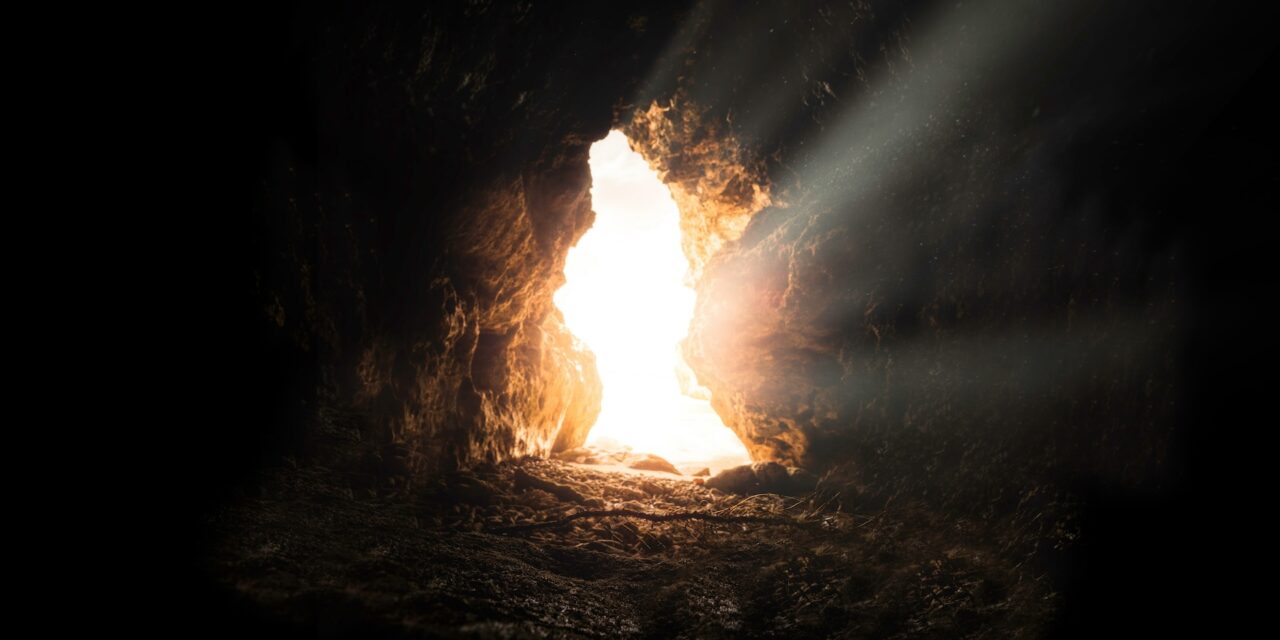This article is an excerpt taken from Hearing the Heartbeat of God by Michael Neelley. This book is about the journey of experiencing and knowing God and knowing ourselves more deeply. It is an invitation to experience an authentic and vulnerable love relationship with God who is right here, right now, longing to share his heart with us.
“The prayer preceding all prayers is,
‘May it be the real I who speaks. May it be the real Thou that I speak to.’”
—C. S. Lewis, Letters to Malcolm: Chiefly on Prayer
I have been reflecting on how Jesus, who was mockingly called the “friend of sinners,” spent most of his time with outcasts: tax collectors, the broken and unclean, and those who sold themselves or were sold by others. He touched these excluded ones and let himself be touched by them. He shared table fellowship with them. He went “out of his way” to cross a lake in a deadly storm so he could come close to the demoniac, who had been cast out, naked and chained among the dead.
These images of Jesus befriending those who were rejected and pushed to the margins have gotten me thinking about all the parts of myself that I have excluded, cast out, pushed down, chained up, and tried to manage so that they wouldn’t disrupt my life and keep me from the possibility of belonging. I know that my angry, impatient, fearful, people-pleasing, passive-aggressive, and controlling self will never be accepted by others. And so how can I ever accept the proud, condescending, judging, self-righteous, prejudiced, weak, comfort seeking, rebellious parts of myself that I am desperately trying to hide?
Christian psychologist David Benner’s The Gift of Being Yourself has been a helpful guide as I have embarked on the journey of trying to learn to welcome all the broken, wounded, and beloved parts of myself into the wide embrace of God’s mercy and grace.
Benner writes:
If I only know my strong, competent self and am never able to
embrace my weak or insecure self, I am forced to live a lie. I must
pretend that I am strong and competent, not simply that I have
strong and competent parts or can be strong and competent
under certain circumstances. If I refuse to face my deceitful self,
I will live an illusion regarding my own integrity…We must
be willing to welcome these ignored parts as full members of the
family, slowly allowing them to be softened and healed by love
and integrated into the whole person we are becoming.¹
As I move toward this slow integration, I feel both hope and resistance. Should I really accept the excluded and sinful parts of myself? Don’t the Scriptures teach us that we should “crucify the flesh with its passions and desires” (Gal 5:24) and “put off our old self ” (Eph 4:22)? Aren’t we supposed to “put on the new self, which is being renewed after the image of its creator” (Col 3:10) and so be “transformed into the same image” of Jesus (2 Cor 3:18)? And yet Benner perceives that “self-transformation is always preceded by self-acceptance. And the self you must accept is the self you actually and truly are before your self-improvement projects.”²
The fearful voice within me worries that Benner is advocating some form of cheap grace, excusing my sin or letting me off the hook from the costly and painful process of “putting to death whatever is earthly in [me]” (Col 3:5). But then Benner continues: “Only after we genuinely know and accept everything we find within our self can we begin to develop discernment to know what should be crucified and what should be embraced as an important part of self.”³
In sitting with all these unwelcome parts of myself in the presence of Jesus, I have sensed the Spirit inviting me to think of them as marginalized sinners, tax collectors in collusion with Empire, cast out demoniacs, and traitors. For so long, I have walled off and sought to manage these excluded ones and called them “unclean.” As I prayerfully named these outcasts in the presence of Jesus, I found myself returning to the deep, subterranean chamber of my Heart House,⁴ in the round room carved out of stone. You might remember that this room had many doors, but up to this point, only one has been opened: the door of the room called “Pretend.”⁵
As I prayerfully spoke these excluded names, all the doors in the chamber popped open. Staring at the gaping mouths of these dark entrances, I have begun to pray, “Jesus, friend of sinners, I know you gladly sit at a table with outcasts, and you put your hands on the unclean, and so I ask you to come and sit here with me. I welcome all these sinful, weak parts of myself to the table of your presence. This is the weak, sinful, enemy self you loved so much you died for. Jesus, Son of the Most High God, this is all my offering. I welcome you to make your home among them.”
“For God alone my soul waits in silence.” (Ps 62:1)
While I wait in silence on many mornings, I find myself returning to this deep stone chamber with Jesus, and he continues to invite me to keep welcoming all these parts of myself into his presence for healing and my ongoing transformation. Rather than rushing to make something happen when I sit and wait for God in silence, I remind myself that it took six months for me to enter my Heart House. And then it took me many months to journey down the long stairs to the stone chamber—and several months before the first door opened. In all this waiting, Jesus doesn’t seem to be in a rush.
As I journey deeper into intimacy with God, I am learning to be patient as I rest my head on his chest and listen attentively for his heartbeat. As I wait, Jesus welcomes greater depths of my heart into the presence of his love. Over time, I am beginning to see my outcast self as Jesus’ friend. At this table of welcome and belonging, I am coming to really know that “God showed his love for [me] in this, that while [I was] still [a sinner] Christ died for [me]” (Rom 5:6, emphasis added). And as I welcome more and more of my rokenness into the presence of Jesus, the Spirit is revealing more and more of the breadth, length, height, and depth of God’s love for me. This is the Father taking me deeper in his love.
As part of my morning prayer, I have adapted Father Thomas Keating’s “The Welcoming Prayer,”⁶ as a doorway into the stone chamber of my Heart House, where I look forward to meeting with Jesus. As I sit in silence, I focus my attention on Jesus, thanking God for his “always with me” presence.
I invite you to join me in this. As you pray, take time to breathe slowly between each line.
The Welcoming Prayer
Welcome, welcome, welcome Jesus.
I welcome every broken, excluded, weak, and hidden part of myself into your presence,
Jesus, because I know you are here for my healing, my freedom, and my transformation.
I surrender all my attempts to acquire power and control,
and I trust in your love.
I surrender all my attempts to acquire affection, belonging, comfort, and pleasure,
and I trust in your love.
I surrender all my attempts to acquire validation, approval, esteem, and significance,
and I trust in your love.
I surrender all my attempts to acquire safety, survival, and security,
and I trust in your love.
I surrender all my attempts to change, manage or fix any situation, circumstance or
person (name them), including myself, including even you, God.
I welcome your love, Father,
I welcome your presence, Jesus,
I welcome your powerful work within me and through me, Holy Spirit.
¹ David G. Benner, The Gift of Being Yourself: The Sacred Call to Self-Discovery (Downers Grove, IL: InterVarsity, 2015), 50–51.
² Benner, The Gift of Being Yourself, 53.
³ Benner, The Gift of Being Yourself, 54–55.
⁴ I introduce readers to my Heart House in chapter one of Hearing the Heartbeat of God.
⁵ I introduce readings to “the room called ‘Pretend’” in chapter two of Hearing the Heartbeat of God.
⁶ Josefina U. Fernandez, “Practicing the Welcoming Prayer” (October 14, 2016). Accessed online: http://www.prayingfromtheheart.org/?m=201610
Cover photo credit: Bruno van der Kraan


